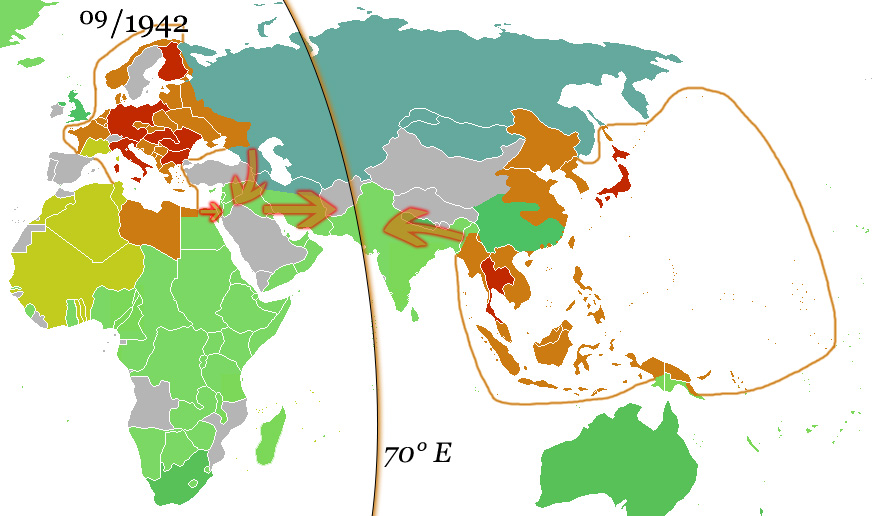Extra Credits
Published on 22 Apr 2019Join the Patreon community! http://bit.ly/EMPatreon
Zal was raised not by his father, who feared his amazing white hair, but by the terrifying creature Simorgh — becoming a man of the mountains in the process. When his father decided to accept him back into society, his muscular frame caught the eye of the princess Rudabeh — but would he be able to gain favor for his wits?
April 23, 2019
Zal and Rudabeh: A Love Story – Persian Myth #2 – Extra Mythology
David Warren’s musings on the Notre-Dame de Paris fire
There have been other incidents since the fire, most pressingly the horrific bombing attacks on Easter Sunday in Sri Lanka, but David Warren would still like us to remember what happened a week ago in Paris:
A week has passed since the fire in, or on, Notre Dame de Paris; let me be the last to comment on a story that is stale-dated by any meejah standard. It dominated international mindwaves for only two days, but left images that viewers may be able to recall many decades from now.
“The church is on fire,” is a commonplace thought, when a church is visibly on fire, and I who am commonplace was thinking that while turning to the news. As an old meejah hack, who happens to know a little about Gothic architecture, I was prepared to discount the “fake news” that would be disseminated in “live time.” For instance, when told that the roof had collapsed, with strong hints that the building was now a write-off, I reflected that the roof is a hat, only. Stone vaulting lies underneath it, except the circle much of the spire fell through (as burnt offering onto the altar). Stone doesn’t burn easily; and even fallen vaulting can be repaired, having been erected with technology we would consider primitive today.
A spectacle: to see the ancient oak timbers, of great girth, burning up like matchsticks. But the craft masons of Notre Dame — far, far in advance of our modern Lego builders — expected fire and lived in a time so simple that they knew oak doesn’t burn without help. It isn’t big matchsticks. The idea that you need some serious accelerants to make it burn, and that only the accelerants would flame like that, was among my initial thoughts. We’ll see what comes of investigations. I also recalled two recent attempts to torch the cathedral, associated with terrorism.
Instead, the explanation of a clumsy accident by restoration workers was immediately accepted by the talking heads, and even Fox News hung up on a guest who had another theory. In favour of the politically correct, plausible account, I learnt that a fire alarm had sounded 23 minutes before the blaze itself was spotted. Paradoxically, this showed the ruinous consequences of depending exclusively on modern technology: the computers directed the first responders to the wrong place, away from the actual heat source.
I can easily believe in electrical short circuits as a fire hazard, especially since having had myself to flee a building where a cost-cutting landlord was having an elevator repaired by what I characterized as “a Romanian comedy team.” (They buzz-sawed through a live electrical cable, then themselves fled the scene of their handiwork as smoke shot up the shaft through the building. Luckily this smoke warned all tenants to evacuate; the building’s siren alone would have been taken by everyone as yet another false alarm.)
MAC Operational Briefcase
Forgotten Weapons
Published on 21 Apr 2019This MAC briefcase, gun, and suppressor are lot #1063 at Morphy’s April 2019 auction:
https://www.forgottenweapons.com/mac-…
If a swanky outfit like H&K can make an “Operational Briefcase” with a submachine gun hidden inside it, then you can bet Military Armament Corporation is going to do the same! MAC made these briefcases for both the M10 and M11 submachine guns, and made a shortened suppressor for the M10 pattern guns to fit. They actually have a distinct advantage over the H&K type by fitting a gun with suppressor – but a distinct disadvantage in the exposed trigger bar on the bottom of the case, with no safety device of any kind.
Note: Possession of the briefcase with a semiauto MAC-type pistol that fits it is potentially seen as constructive possession of an AOW. A machine gun can be legally fitted in the case, but a semiauto pistol in it is considered a disguised weapon, and thus requires registration as an AOW.
http://www.patreon.com/ForgottenWeapons
Cool Forgotten Weapons merch! http://shop.bbtv.com/collections/forg…
Contact:
Forgotten Weapons
PO Box 87647
Tucson, AZ 85754
The logistics of empire
Nigel Davies pops up on his blog after a lengthy period of inactivity to post his analysis of imperial logistical limits in World War Two:
There’s an old saying that David and Leigh Eddings paraphrased in one of their fantasy books: “any fool can raise an army, but you start running into trouble around suppertime.”
(Which is just a simplified way of saying that amateurs discuss tactics, but professionals think logistics.)
So let’s consider World War Two from the “who can afford what” perspective.
Any fool politician can promise Lebensraum, or a Mare Nostrum, or a Greater Asian Co-Prosperity Sphere: the problem comes when your nation lacks the resources to buy the equipment you need to make your plan stick.
It would be correct to suggest that the most rag-tag of “governments” can raise and equip an infantry force, and possible give it some artillery support. Mao and Tito spring to mind, but the Hungarians, Bulgarians and Iranians wouldn’t be far off. (One particularly entertaining description of the vast Operation Barbarossa – the Axis invasion of Russia – describes hundreds of gaily painted peasant carts masquerading as the Rumanian logistics column.)
Perhaps your government is a bit more advanced in both your tax collection and your industrial base, and you can manage a few armoured cars or tanks, and maybe even a nominal number of fighters and bombers. Think Nationalist China, Finland, Belgium, Greece and Turkey. That still doesn’t mean that you can also manage more than a token number of destroyers or coastal defence ships to manage defensive support. Frankly Canada, Australia, India and possibly even South Africa were greater “powers” than any of those.
The actual capacity to project power to other parts of the world in your own right – rather than under the auspices of your allies – requires not only a developed army and air force, but a naval element of – at a minimum – a good balanced cruiser force with adequate resources to back it up. Think Spain and Brazil… and, again, Australia.
Actually protecting far flung imperial possessions requires even a bit more than that. (Spain had discovered this while losing a brief war with the United States – which had run out of land to imperially conquer from the French, native Americans or Mexicans, and – after a couple of abortive attempts to invade Canada – therefore turned a quick takeover of overseas bits. Mainly Spanish possessions like the Philippines, but also including otherwise independent states like Hawaii.)
In fact the best defence of a far flung empire if you couldn’t match other people’s battle fleets was a good submarine force. Think the Netherlands, and particularly its half dozen cruisers and two dozen submarines protecting the Netherlands East Indies.
But it is a big jump from a token overseas empire, to being able to play with the big boys. The financial and industrial resources necessary to developing military forces capable of fighting other major powers is simply beyond the resources of more than half a dozen nations at any time. Which is why the term “Great Powers” has always come down to those capable of standing their ground against other great powers.
British Ration Week Episode 6: Cafeterias & Restaurants
InRangeTV
Published on 25 Jan 2018One of the Food Ministry’s programs during the war was the creation of the British Restaurants – cafeteria like establishments which offered a hot 3-course meals for just a few pence and without the use of any ration coupons. More than 2000 would be established by the end of the war, and eating out exploded in popularity among the British population because of them. The food was often not exciting, but it was hot, cheap, and readily available.
Private restaurants were able to remain open and in business through the war, but were restricted in several key ways to ensure that they did not become a loophole in rationing for the wealthy. A restaurant could serve only 3 courses, only one could include meat, and a limit was put on what could be charged for a meal.
Day 6 Menu:
Breakfast: Oatmeal with jam, tea
Lunch: Liver, onions and kale
Tea: Leftover Peach Clafouti, tea
Dinner: Lamb Pasties with GravyInRange is entirely viewer supported:
https://www.patreon.com/InRangeTV
QotD: Cities and the Laffer Curve
… government finances are ultimately constrained by the much-maligned Laffer Curve. There is some point, however high the percentage, beyond which raising the tax rate not only doesn’t bring in more revenue, but actually lowers government income. And the smaller the level of government, the lower the tax rate at which Laffer effects kick in. If your block had the ability to levy a 25 percent tax on your income, and actually did so, you’d sell your house pretty quick. It’s much harder to pick up and move to another country. We also have to factor in the fact that, in a democracy, voters can go to the polls and say “no more,” which is a sort of secondary Laffer point that people planning in decades have to reckon with.
Cities tend to declare bankruptcy precisely because they’re near one of those points, through some combination of financial mismanagement and local economic decline. When they have exhausted their ability to borrow, or wheedle bailouts out of some larger government entity, they end up with an unpalatable choice between cutting municipal services or failing their creditors …
Megan McArdle, Bloomberg View, 2017-04-11.






